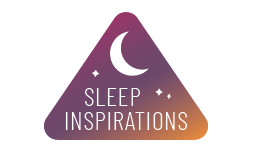Home Sleep Apnea Testing
Sleep Test Polysomnography
Sleep Testing Introduction
Introduction Text (if any)
Home Sleep Apnea Testing
The Process
- Home sleep apnea test requested or ordered
- Appointment to pick up the test device
- Instructions on how to wear the device
- Instructions on how to operate the device
- At home you put the device on and wear for a night of sleep
- Appointment to return the device
- Follow up appointment with your physician for results
Description
Home sleep apnea testing is an overnight recording that you will carry out on your own. Home sleep apnea testing became available in 2005. It has been widely used in the field of sleep medicine since the government, through Medicare, accepted it as a diagnostic test for obstructive sleep apnea about six years later. There are multiple devices available. The FDA approves devices that are used by physicians. Your sleep testing facility will utilize one of these devices.
If your physician has ordered it for you, the day of your study you will have an appointment to pick up the testing it. You will be shown the unit and how to wear it for your test. They will help you fit any monitors that need adjustments. The units are easy to use and quite accurate. You will take the unit home to perform the test.
At your bedtime you will put on the testing apparatus and start the test with the push of a single button. When you get up for your day in the morning you will push the button to terminate the study recording. You will pack up the unit and return it to the Center where the information recorded will be downloaded.
The home sleep tests are purely tests for obstructive sleep apnea. They are exceptionally good at diagnosing obstructive apnea in the vast majority of individuals. People with milder forms of apnea, difficulty with initiating and staying asleep, and people with positional apnea, may have the condition missed on home sleep apnea testing. When mild apnea is suspect, a sleep test performed in a sleep center, a polysomnography, is the medically preferred test. Unfortunately many insurance providers require all patients who need testing for sleep disorders to have a home sleep apnea test as the first step in their testing evaluation with limited exceptions.
Question – Obstructive sleep apnea is treated for two reasons. Do you know what they are?
Sleep Test (Polysomnogram)
Sleep testing may be ordered for many reasons. Sleep test performed in a sleep testing facility are considered the standard for testing for sleep disorders. While apnea can be diagnosed with test performed by the individual at home, many problems with sleep can only be diagnosed with a polysomnogram (PSG).
The Test
The PSG is designed to measure sleep stages, breathing, body movements, heart function and oxygen levels. Measuring all of these functions is done with sensors that are placed on you. At the sleep facility you may be the first patient who the technologist connects to the equipment or follow someone else. This order is usually based on the time you normally go to sleep. You can expect the sleep technologist to spend between 30 and 45 minutes placing the sensors. Once you are connected to the monitors, you can go to sleep or read, watch TV, etc. until the test begins. The test will begin as close to your normal sleeping time as possible, but the center need to consider the time needed to complete the test. A minimum of six (6) hours of recording time is required.
The sleep technologist will explain the procedure of connecting you to the recording equipment. There will
be wires pasted on your head, chin and legs. A small sensor will be placed under your nose and heart monitoring leads on your chest. You will be wearing belts on your chest and abdomen. You will have a conducting paste in your hair and on your face. This paste conducts signals from your body to the monitors and gives us the information to make the needed measurements.
Most people worry that they will not be able to sleep during the test. Will I sleep long enough? Will it be good enough sleep to get results? These worries are usually unnecessary. The vast majority of patients sleep long enough and well enough for the equipment to get adequate information about their sleep.
Many individuals will be found to have obstructive apnea early in a sleep test. If the amount of apnea reaches a predetermined number per hour early in the test, treatment with positive airway pressure will be attempted during the remained of the night. The study is split between the diagnostic study and a treatment study. (Split Night Sleep Study)
A polysomnogram is the most accurate sleep test available.
Last updated: 6/2022
